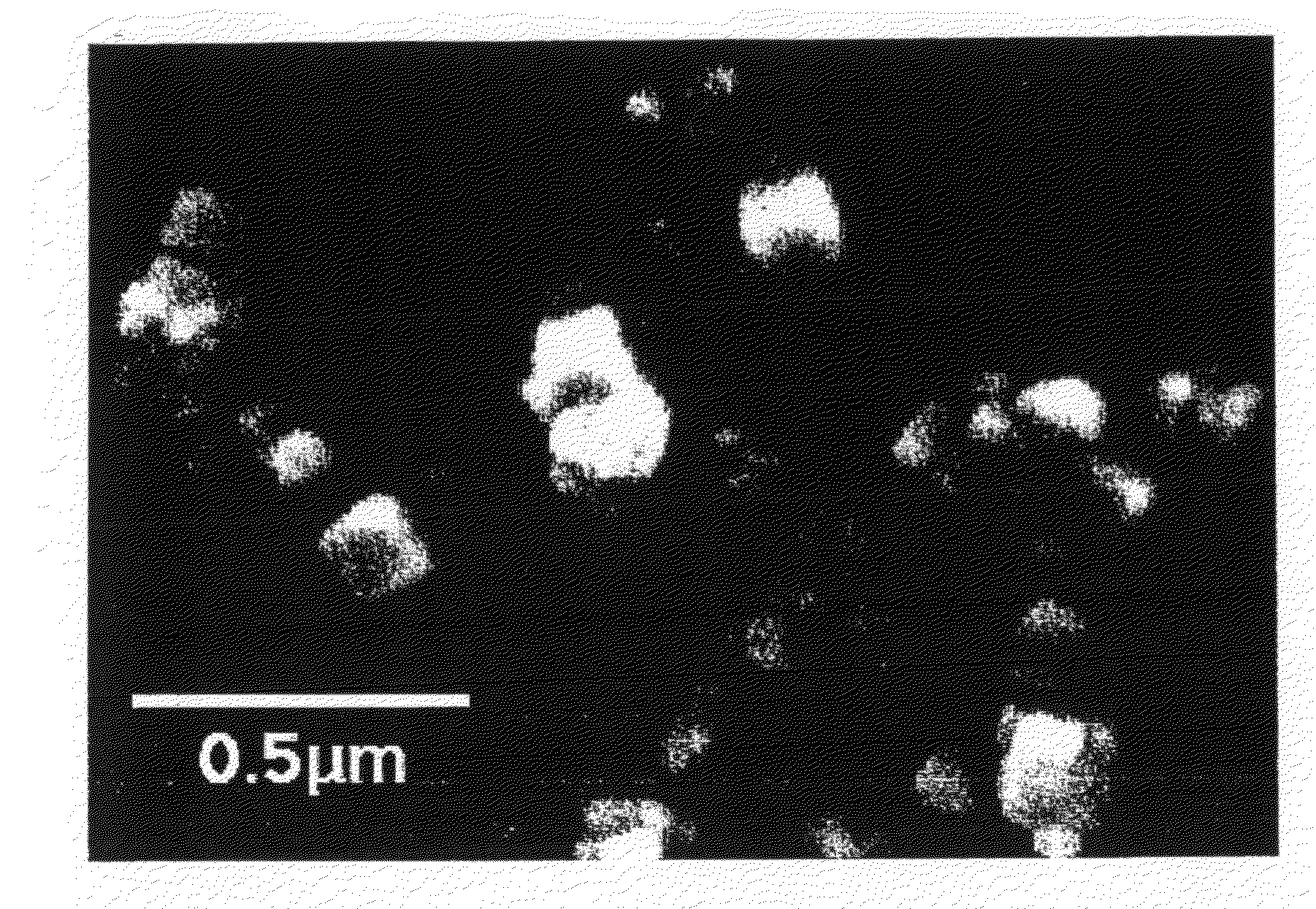Toner for electrophotography and process for producing the same
a technology for electrophotography and electrophotography, applied in the field of electrophotography toner, can solve the problems of aggregation noise, fogging due to toner scattering, scratches on photoreceptors, etc., and achieve the effects of preventing degradation of image quality, excellent environmental characteristics, and enhanced definition
- Summary
- Abstract
- Description
- Claims
- Application Information
AI Technical Summary
Benefits of technology
Problems solved by technology
Method used
Image
Examples
example 1
[0122]
(Preparation of Toner)Binder ResinsPolyester resin A (glass transition temperature30.3parts by weight(Tg): 62° C., flow softening temperature:110° C., weight average molecular weight (Mw):8200)Polyester resin B (glass transition temperature61.2parts by weight(Tg): 62° C., flow softening temperature:142° C., weight average molecular weight (Mw):110000)ColorantMagenta pigment (trade name “Red No. 8”,4.5parts by weightDainichiseika Color & Chemicals Mfg. Co., Ltd.)Mold release agentWax (trade name “WEP-8”, NOF Corporation)3.0parts by weightCharge control agentStyrene-acrylate-based resin (trade name1.0part by weight“FCA-1001N”, Fujikura Kasei Co., Ltd.)
[0123]The raw materials above were melt-kneaded using a biaxial kneader / extruder (trade name “PCM-30”, Ikegai Iron Works Co.) under conditions of a preset temperature of from 90 to 100° C., a screw speed of 100 rpm and a discharge rate of 3.5 kg / hr to give a kneaded product. The kneaded product was then solidified by cooling, groun...
example 2
[0127]To the toner obtained in Example 1 were added
[0128]0.2 part by weight of alumina (trade name “AKP 3000”, Sumitomo Chemical Co., Ltd.),
[0129]0.7 part by weight of hydrophobic silica A (BET specific surface area: 200 m2 / g, average primary particle size: 8 nm, surface treatment: hexamethyldisilazane+aminosilane) and
[0130]1.0 part by weight of hydrophobic silica B (BET specific surface area: 120 m2 / g, average primary particle size: 15 nm, surface treatment: hexamethyldisilazane) and the mixture was blended using a Henschel mixer at a circumferential speed of 40 m / sec for four minutes. Further, to this mixture was added 1.0 part by weight of strontium titanate α (BET specific surface area: 32 m2 / g, average primary particle size: 70 nm, [quartile deviation of primary particle size] / [average primary particle size]: 0.19, no hydrophobicizing treatment, rectangular parallelepiped particles, an SEM picture of which is shown in the drawing) and the mixture was blended using a Henschel mi...
example 3
[0131]To the toner obtained in Example 1 were added
[0132]0.2 part by weight of alumina (trade name “AKP 3000”, Sumitomo Chemical Co., Ltd.),
[0133]0.1 part by weight of silicone oil (trade name “KF 96-50 CS”, Shin-Etsu Chemical Co., Ltd.),
[0134]0.7 part by weight of hydrophobic silica A (BET specific surface area: 200 m2 / g, average primary particle size: 8 nm, surface treatment: hexamethyldisilazane+aminosilane) and
[0135]1.0 part by weight of hydrophobic silica B (BET specific surface area: 120 m2 / g, average primary particle size: 15 nm, surface treatment: hexamethyldisilazane) and the mixture was blended using a Henschel mixer at a circumferential speed of 40 m / sec for four minutes. Further, to this mixture was added, 1.0 part by weight of strontium titanate α (BET specific surface area: 32 m2 / g, average primary particle size: 70 nm, [quartile deviation of primary particle size] / [average primary particle size]: 0.19, no hydrophobicizing treatment, rectangular parallelepiped particle...
PUM
| Property | Measurement | Unit |
|---|---|---|
| BET specific surface area | aaaaa | aaaaa |
| BET specific surface area | aaaaa | aaaaa |
| BET specific surface area | aaaaa | aaaaa |
Abstract
Description
Claims
Application Information
 Login to View More
Login to View More - R&D
- Intellectual Property
- Life Sciences
- Materials
- Tech Scout
- Unparalleled Data Quality
- Higher Quality Content
- 60% Fewer Hallucinations
Browse by: Latest US Patents, China's latest patents, Technical Efficacy Thesaurus, Application Domain, Technology Topic, Popular Technical Reports.
© 2025 PatSnap. All rights reserved.Legal|Privacy policy|Modern Slavery Act Transparency Statement|Sitemap|About US| Contact US: help@patsnap.com

